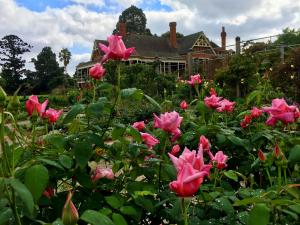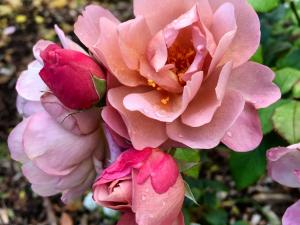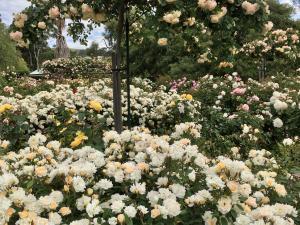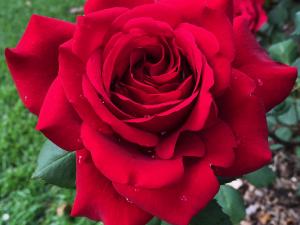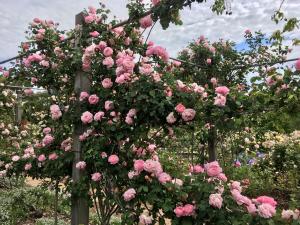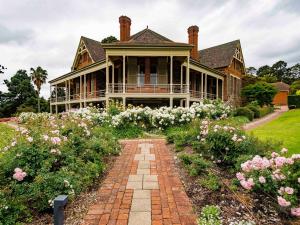The Twentieth Century and Heritage Rose Gardens
The Twentieth Century Rose Garden at the Waite Campus, University of Adelaide, traces the development of roses from 1900 until today with roses that are significant to each decade.
Whilst not the original designs from Peter Waite’s time, it incorporates many of the original features such as the rose arbour. The southern end features earlier varieties, in a formal layout, while the other end features different varieties in a more informal, contemporary design.
Earlier varieties no longer commercially available were sourced from England, America and New Zealand. Roses are in full bloom from September until May.
“Flowers leave a part of their fragrance in the hands that bestow them.” Unknown.
History of the Rose Garden
The original rose garden was established by Peter Waite to the west of the present site. An arbour covered in pale yellow double roses stretched from Urrbrae House to Claremont Avenue. Roses would have also bordered the main lawn in front of Urrbrae House.
By 1956 the rose garden had deteriorated, overgrown with Kikuyu grass and infested with wilt and dieback. In 1959 a new trial rose garden was established by the South Australian Rose Society and Alex Ross to the northeast of Urrbrae House to replace these diseased original ones. Despite cuttings being taken many did not live. Two roses do survive from Peter Waite’s time: Polyantha rose Cécile Brünner hedge (cultivar introduced in Australia in 1911) and Noisette rose Madame Alfred Carriere (introduced in Australia in 1889), both of which are located near the house.
In 1972 the second rose garden had to be removed to make way for a new teaching wing. In 1991 as part of Urrbrae House's centenary plans, a new rose garden was established in its present site to the south of Urrbrae House. Again, the Ross family was involved, this time Alex's son, Deane Ross a famous Australian rose breeder agreed to design this new garden. All of the roses for this garden were donated by Ross Roses.
Some of the roses which Deane wanted to include had now become commercially unavailable and had to be sourced from England, America and New Zealand. The C20th Rose garden has become a historic collection of wide-ranging roses and attempts have been made to represent the most significant of each class; 200 varieties are represented. The first stage of the garden was opened in 1993. The second stage, the more contemporary design, was developed by Viesturs Cielens in collaboration with Susan Phillips. It features low mounds and three ponds, it was opened in 1996.
Features of the gardens
The Rose Garden harbours the 'Armillary Sphere Sundial' designed and made specifically for this location by physicists Margaret Folkhard and John Ward, Sundials Australia. The sundial was funded by private donations. (See photo to the right).
The Waite Institute has been responsible for important development in the area of controlling pests, such as aphids and thrips. Research undertaken in the Urrbrae House Garden resulted in the development of landmark ecological theory.
Sponsors and volunteers have been, and continue to be, involved in the development and maintenance of the rose garden:
Sponsors include Ross Roses, Heritage Roses Australia -SA, Rose Society of South Australia and Neutrog Australia.
Special thanks also to the Urrbrae House Garden Volunteers for their continuing work and support.

